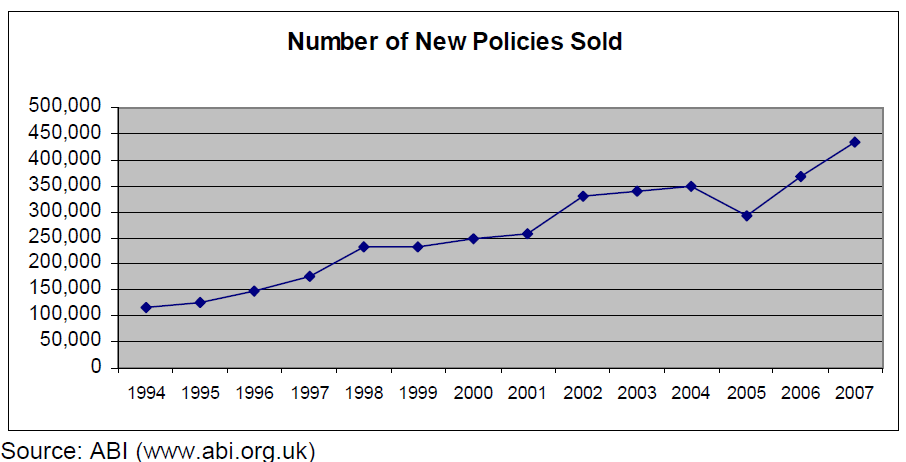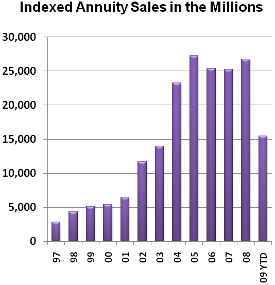In a year when low interest rates are making single premium immediate annuities more expensive, tiny Presidential Life, which was born 44 years ago in a Nyack, NY storefront, has found a way to enhance a SPIA’s payout.
The $240 million NASDAQ-listed company, 40% of whose sales are income annuities, has engineered a joint and survivor contract where the first annuitant receives benefits for life but the survivor receives income for a period certain or for life, whichever is less.
Contract owners can adjust their payments up or down by shortening or lengthening the period certain, from as few as five to as many as 20 years. Because the second income stream is life-contingent, the survivor receives an added dividend from mortality pooling.
“Normally, adding a second annuitant can reduce the monthly payment,” the company said in a release. “But in [our] new contract, the second annuitant receives the full payment for a fixed, pre-elected period of five to 20 years or until death, if sooner. If the second annuitant predeceases the first annuitant, the first annuitant continues to receive a lifetime annuity at the same payment rate.”
According to Presidential’s Gary Mettler, this arrangement would be appropriate for intergenerational transfers from an 80-something parent to a 60-something child, perhaps as an alterative to a single life annuity with a premium refund feature.
“We take the beneficiary of a period certain income annuity and make that person a second annuitant,” Mettler, Presidential vice president, told RIJ. “By making the contract a temporary life, we give ourselves some wiggle room to raise payouts.”
“We generally make sure that the payment period is long enough to refund the premium. If there’s a $100,000 premium, for instance, we might issue a contract with full life and 13 years period certain,” whichever is shorter.
“The Achilles heel of a life with period certain contract is that the beneficiary may receive little or nothing,” Mettler said. To avoid that problem, agents and consumers sometimes choose contracts with long certain periods or refund provisions. But that strategy punishes the annuitants with lower incomes, without guaranteeing a legacy.
“The problem with a normal joint and survivor for a parent and child is that it drags the payment down,” Mettler said. “By limiting the duration of the unreduced payments to the second annuitant, we have more premium dollars to fund higher monthly payments to the first Annuitant, contract owner.”
This structure also protects the family in other ways, Mettler said. If there’s a Medicaid lien against the first annuitant, for instance, the state would be able to claim assets ahead of a beneficiary but not ahead of a second annuitant. “Life contingent payments and their legacies become consumer defensive financial arrangements without peer,” the company said in a release.
While interest rates are low, interest in SPIAs among the elderly is high. “As a result of the economic debacle, we’re getting more life-contingent SPIAs at high ages. Our biggest age group is 75 to 85. Many are life only. If the bank is only paying one percent on CDs, and the clients find themselves invading other money to live on, this produces a lot more income,” Mettler said.
Aside from its small size and slim marketing budget, Presidential Life’s weakness is its B+ (Good) rating for financial strength from A.M. Best. Last April, the ratings firm noted the insurer’s vulnerability to low interest rates because of its concentration in SPIAs, but praised it for paying down its debt. The company lost $10.2 million in the first half of 2009, compared with net income of $22.4 in the first half of 2008.
One annuity industry observer calls Presidential Life “The Mouse that Roared”-referring to Leonard Wibberley’s 1955 comic novel after a tiny European country whose archers conquer Manhattan. “For such a small company, they’ve shown the greatest leadership in terms of product development and marketing of income annuities,” said Garth Bernard, CEO of Sharper Financial LLC.
“My hat is off to them,” he said. “More carriers should take a page out of their book. The industry would not be in the precarious position it is in today if they had followed the leadership of Presidential Life (at least for putting some of their eggs in the income annuity basket instead of entirely in the VA basket).”
“We do more things with SPIAs than anyone else,” Mettler said. “In the last year, for instance, almost everyone has dropped out of enhanced annuities because it’s a capital intensive tool. So now only we and Mutual of Omaha issue them. We’re picking up business from other carriers, and because the carrier pool has dropped, we can price accordingly.”
Presidential Life has a slim marketing budget-it relies on fixed annuity giant New York Life to generate buzz for SPIAs-but its SPIA commissions are competitive. “We pay [insurance marketing organizations] 4.5%, and they will usually reel out 3.5 points to the agents. We don’t adjust commissions for age, and we issue to age 100, “ he said.
But winning over insurance agents isn’t easy. “If you had 100 agents in the room and asked them if they had ever sold a SPIA, you might find five who would raise their hands. And if they actually sold one, it was probably a period certain, and usually sold in the context of selling a split annuity-a deferred annuity and an immediate annuity,” Mettler said.
“Why don’t agents like them? It’s a single transaction, and a one-time fee,” he added. “With a variable annuity, they can exchange it for a more advanced product when the surrender period expires and receive a new commission. So a lot of agents buy a deferred, then another deferred. They haven’t been trained to annuitize. They’re trained to transfer.”
© 2009 RIJ Publishing. All rights reserved.


 In 2008, the Association of British Insurers data indicates, over 450,000 pensions annuities were written, with an average “pensions pot” or retirement account balance of about £25,000 ($40,000). The median value was only about £15,000 ($24,000), with 75% of cases related to pensions pots worth less than £30,000 ($48,000). A pensions pot of £15,000 would generate a level income of perhaps £1000 ($1600) a year for a male aged 65, with no spousal entitlement.
In 2008, the Association of British Insurers data indicates, over 450,000 pensions annuities were written, with an average “pensions pot” or retirement account balance of about £25,000 ($40,000). The median value was only about £15,000 ($24,000), with 75% of cases related to pensions pots worth less than £30,000 ($48,000). A pensions pot of £15,000 would generate a level income of perhaps £1000 ($1600) a year for a male aged 65, with no spousal entitlement. Enhanced annuities, which accelerate payments for contract owners who have health issues that reduce their life expectancies, have been popular among retirees in the U.K. They don’t yet sell as well as standard income annuities, but their market share is 16% and growing. In the U.S., these products are known as “impaired risk” or “medically underwritten” annuities.
Enhanced annuities, which accelerate payments for contract owners who have health issues that reduce their life expectancies, have been popular among retirees in the U.K. They don’t yet sell as well as standard income annuities, but their market share is 16% and growing. In the U.S., these products are known as “impaired risk” or “medically underwritten” annuities.

 “Some people say it doesn’t work, that you can’t reach young people this way, that’s it’s still too formal,” he said. “We just launched the book, and we are this week still sending it to people under 35 as part of a packet with other information. So we don’t yet have measurements of the results.”
“Some people say it doesn’t work, that you can’t reach young people this way, that’s it’s still too formal,” he said. “We just launched the book, and we are this week still sending it to people under 35 as part of a packet with other information. So we don’t yet have measurements of the results.” 






